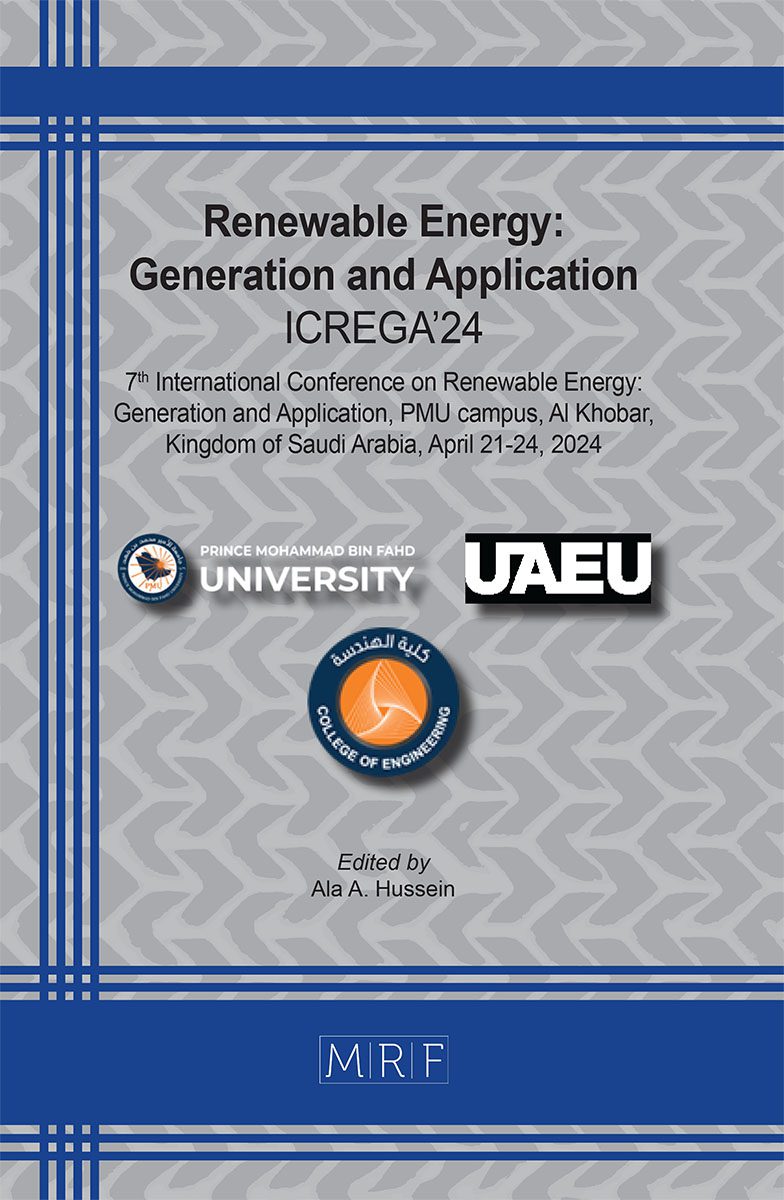–
Techno-economic comparison between PV and wind to produce green hydrogen in Jordan
Zaid HATAMLEH, Ahmad AL MIAARI
download PDFAbstract. The world has begun to move towards searching for the best ways and means to be able to produce hydrogen gas in a healthy and environmentally friendly manner. Especially after manufacturing cars that run on hydrogen, many home appliances in the future would operate using hydrogen. This research paper aims to provide a detailed study and comparison for the potential of photovoltaic energy and wind energy in hydrogen gas production using electrolyzes technology for home applications. In this study, a mathematical model is proposed to predict hydrogen production by means of the two renewable energy sources. Furthermore, the mathematical model computes the electrical energy produced from the fuel cells using the produced hydrogen gas and evaluate its levelized cost. The study was conducted based on the technical specifications based on Jordanian codes and conditions. Results showed that photovoltaic energy system is the best solution compared to other proposed systems which can produce 30,140.5252 kg of hydrogen and produce 1,264,551 kWh/year with the lowest hydrogen levelized cost of 13.262 $/kg.
Keywords
Hydrogen, Green Hydrogen, Renewable Energy, Photovoltaic Energy, Wind Energy, Levelized Cost of Hydrogen (LCOH)
Published online 7/15/2024, 8 pages
Copyright © 2024 by the author(s)
Published under license by Materials Research Forum LLC., Millersville PA, USA
Citation: Zaid HATAMLEH, Ahmad AL MIAARI, Techno-economic comparison between PV and wind to produce green hydrogen in Jordan, Materials Research Proceedings, Vol. 43, pp 36-43, 2024
DOI: https://doi.org/10.21741/9781644903216-5
The article was published as article 5 of the book Renewable Energy: Generation and Application
![]() Content from this work may be used under the terms of the Creative Commons Attribution 3.0 license. Any further distribution of this work must maintain attribution to the author(s) and the title of the work, journal citation and DOI.
Content from this work may be used under the terms of the Creative Commons Attribution 3.0 license. Any further distribution of this work must maintain attribution to the author(s) and the title of the work, journal citation and DOI.
References
[1] M. T. Muñoz Díaz, H. Chávez Oróstica, and J. Guajardo, “Economic Analysis: Green Hydrogen Production Systems,” Processes, vol. 11, no. 5, p. 1390, May 2023. https://doi.org/10.3390/pr11051390
[2] O. Schmidt, A. Gambhir, I. Staffell, A. Hawkes, J. Nelson, and S. Few, “Future cost and performance of water electrolysis: An expert elicitation study,” Int. J. Hydrogen Energy, vol. 42, no. 52, pp. 30470–30492, Dec. 2017. https://doi.org/10.1016/j.ijhydene.2017.10.045
[3] M. Shahabuddin, M. A. Rhamdhani, and G. A. Brooks, “Technoeconomic Analysis for Green Hydrogen in Terms of Production, Compression, Transportation and Storage Considering the Australian Perspective,” Processes, vol. 11, no. 7, p. 2196, Jul. 2023. https://doi.org/10.3390/pr11072196
[4] M. S. Herdem et al., “A brief overview of solar and wind-based green hydrogen production systems: Trends and standardization,” Int. J. Hydrogen Energy, vol. 51, pp. 340–353, Jan. 2024. https://doi.org/10.1016/j.ijhydene.2023.05.172
[5] I. Ourya, N. Nabil, S. Abderafi, N. Boutammachte, and S. Rachidi, “Assessment of green hydrogen production in Morocco, using hybrid renewable sources (PV and wind),” Int. J. Hydrogen Energy, vol. 48, no. 96, pp. 37428–37442, Dec. 2023. https://doi.org/10.1016/j.ijhydene.2022.12.362
[6] L. B. B. Maciel, L. Viola, W. de Queiróz Lamas, and J. L. Silveira, “Environmental studies of green hydrogen production by electrolytic process: A comparison of the use of electricity from solar PV, wind energy, and hydroelectric plants,” Int. J. Hydrogen Energy, vol. 48, no. 93, pp. 36584–36604, Dec. 2023. https://doi.org/10.1016/j.ijhydene.2023.05.334
[7] L. Al-Ghussain, A. D. Ahmad, A. M. Abubaker, K. Hovi, M. A. Hassan, and A. Annuk, “Techno-economic feasibility of hybrid PV/wind/battery/thermal storage trigeneration system: Toward 100% energy independency and green hydrogen production,” Energy Reports, vol. 9, pp. 752–772, Dec. 2023. https://doi.org/10.1016/j.egyr.2022.12.034
[8] Y. Ren et al., “Modelling and capacity allocation optimization of a combined pumped storage/wind/photovoltaic/hydrogen production system based on the consumption of surplus wind and photovoltaics and reduction of hydrogen production cost,” Energy Convers. Manag., vol. 296, p. 117662, Nov. 2023. https://doi.org/10.1016/j.enconman.2023.117662
[9] M. Nasser and H. Hassan, “Thermo-economic performance maps of green hydrogen production via water electrolysis powered by ranges of solar and wind energies,” Sustain. Energy Technol. Assessments, vol. 60, p. 103424, Dec. 2023. https://doi.org/10.1016/j.seta.2023.103424
[10] O. A. Dabar, M. O. Awaleh, M. M. Waberi, and A.-B. I. Adan, “Wind resource assessment and techno-economic analysis of wind energy and green hydrogen production in the Republic of Djibouti,” Energy Reports, vol. 8, pp. 8996–9016, Nov. 2022. https://doi.org/10.1016/j.egyr.2022.07.013
[11] HOMER Pro, “Microgrid Software for Designing Optimized Hybrid Microgrids n.d.” https://homerenergy.com/products/pro/index.html
[12] K. W. Harrison, R. Remick, G. D. Martin, and A. Hoskin, “Hydrogen Production: Fundamentals and Cas Study Summaries e Preprint,” 2010. [Online]. Available: https://www.osti.gov/bridge
[13] The Hydrogen Economy. Washington, D.C.: National Academies Press, 2004. https://doi.org/10.17226/10922
[14] A. Al Miaari and H. M. Ali, “Technical method in passive cooling for photovoltaic panels using phase change material,” Case Stud. Therm. Eng., vol. 49, p. 103283, Sep. 2023. https://doi.org/10.1016/j.csite.2023.103283
[15] A. Al Miaari, A. El Khatib, and H. M. Ali, “Design and thermal performance of an innovative greenhouse,” Sustain. Energy Technol. Assessments, vol. 57, p. 103285, Jun. 2023. https://doi.org/10.1016/j.seta.2023.103285
[16] A. Al Miaari and H. M. Ali, “Batteries temperature prediction and thermal management using machine learning: An overview,” Energy Reports, vol. 10, pp. 2277–2305, Nov. 2023. https://doi.org/10.1016/j.egyr.2023.08.043












